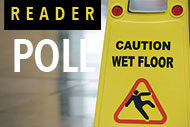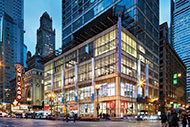There are more than 1,900 retail-based health facilities in the United States, and they treat more than 10 million people each year. The location factor — health care services set in a venue where consumers already go for everyday needs — certainly gives them leverage. But, as Sarah Bader, principal at architectural firm Gensler, writes in "Retail design strategies for health care," retail health providers have to find new ways to compete in a competitive marketplace. One way to do that, she says, is to create consumer-focused facilities by adopting retail design strategies.
Her advice? Be accessible, specific, clear, nimble, virtual and visible.
But, are retail health clinics the only ones that can benefit from this strategy? Whether a patient is walking into a CVS Minute Clinic or a conventional health facility, all patients are thinking more like consumers as they pay more for their health care with each passing year.
For instance, University of Minnesota Health Clinics and Surgery Center, Minneapolis collaborated with CannonDesign to create a the five-story ambulatory care facility inspired, in part, by Apple stores and other retail outlet designs. The lobby design doesn't allocate space for a formal check-in or check-out area. Instead, patients are greeted by a staff member with a mobile device for checking them in, helping them to fill out health forms, finding their exam room and scheduling future visits.
Hospitals also are paying more attention to the actual retail spaces located within their facilities. In "Health care facilities go for high-end design in retail spaces," writer Amy Eagle describes the many ways in which health systems are setting a competitive edge by designing retail sites that answer patient needs, rather than a convenient place to buy flowers and get well cards.
"Health care organizations are catering to an increasingly consumerist patient population with retail spaces designed to delight, comfort and simplify people’s lives, and to improve their health," Eagle writes. "By building a one-stop shop for health care and related merchandise, hospitals and health systems can provide an added benefit to their community."
Survey results



